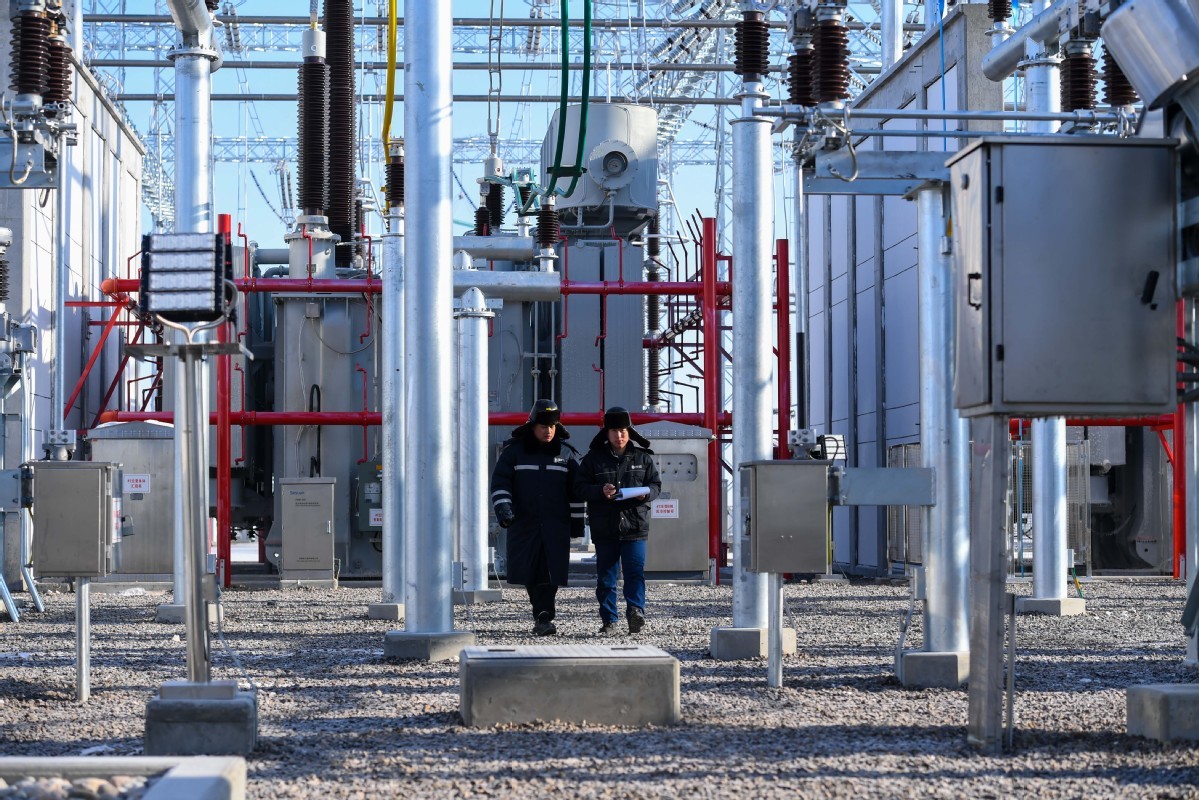
State Grid employees inspect equipment at a power station in Xilin Gol League, the Inner Mongolia autonomous region, in December. (Photo: Xinhua)
Head of the regional development and reform commission assures green push
North China's Inner Mongolia autonomous region, whose economy is heavily dependent on energy and chemical industries, is determined to take practical and essential measures to reduce carbon emissions and pursue environmentally friendly development, one of its senior officials said.
The region's resolve comes in response to the country's commitment to peak carbon emissions by 2030 and realize carbon neutrality by 2060, he said.
Gong Mingzhu, head of the regional development and reform commission, and a deputy to the 13th National People's Congress, said energy consumption control will be a top priority for Inner Mongolia to plan for industrial layout and introduce investment projects during the 14th Five-Year Plan period (2021-25).
The region, he said, is determined to pursue high-quality and low-carbon development.
"As an important energy and strategic resources supplier in China, the region must make breakthroughs in reduction of carbon emissions and energy conservation, while at the same time ensure smooth supplies of energy and raw materials to contribute to China's energy and economic security,"Gong said.
The region will leverage prices as well as other regulatory measures to promote the orderly elimination of outdated production capacity in energy-intensive industries.
It will strictly control substandard and repetitive projects in energy-intensive industries, while encouraging enterprises to step up upgrading and transformation efforts to make room for energy consumption in high-quality development.
The region will also accelerate the establishment of a new energy supply system that features intensive, efficient and comprehensive use of multiple forms of energy, to increase utilization of renewables and gradually reverse the coal-centered energy mix.
"The region must firmly pursue a new growth pathway of eco-friendly high-quality development, which will be the foundation for all the planning for important goals, projects, and policy measures," he said.
The region will strengthen efforts to balance industrial layout among different areas during the 14th FYP period.
The region's eastern part will focus on building a green industrial system pillared upon industries like ecological agriculture and ecotourism.
The western part will promote ecological protection and high-quality development in the Yellow River Basin, and will strictly implement policies restricting mindless exploitation of natural resources in extremely fragile ecological areas.
It will also shore up industrial innovation and transformation to foster and expand new development momentum. No area or industry is allowed to cross the lines of energy conservation and carbon emissions reductions, Gong said.
The region expects installed new energy capacity to exceed half of its installed power capacity by 2025, to reduce about 200 million metric tons of carbon dioxide emissions annually, according to Li Li, former head of the region's energy authority, who is now mayor of Ordos.
Installed new energy capacity in the region has hit 50 million kilowatts, topping the country, Gong said.
New energy generates 90 billion kilowatt-hours of electricity annually in the region, and nearly one-third of installed electricity capacity and one-fifth of electricity consumption of the whole society comes from new energy, he said.


